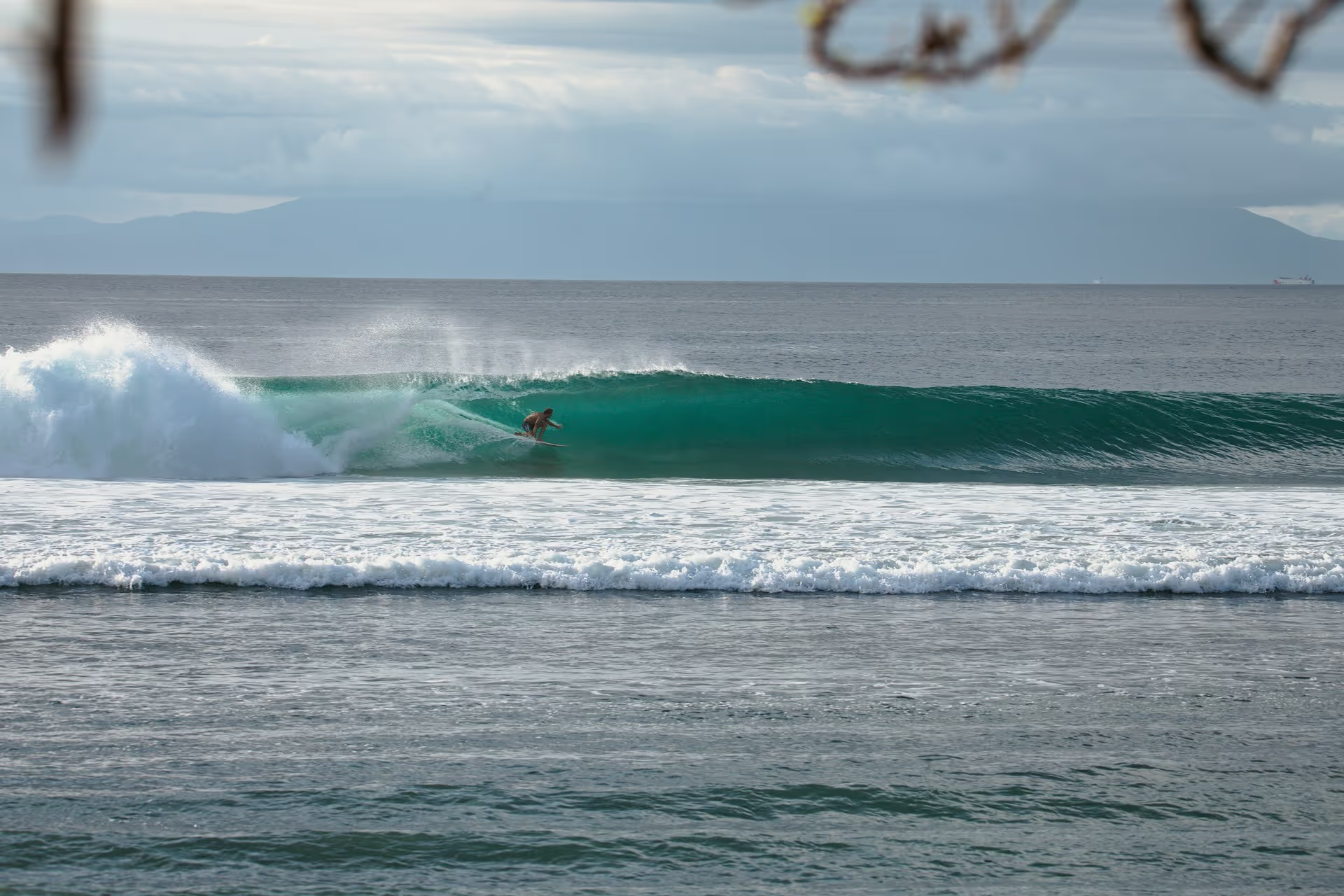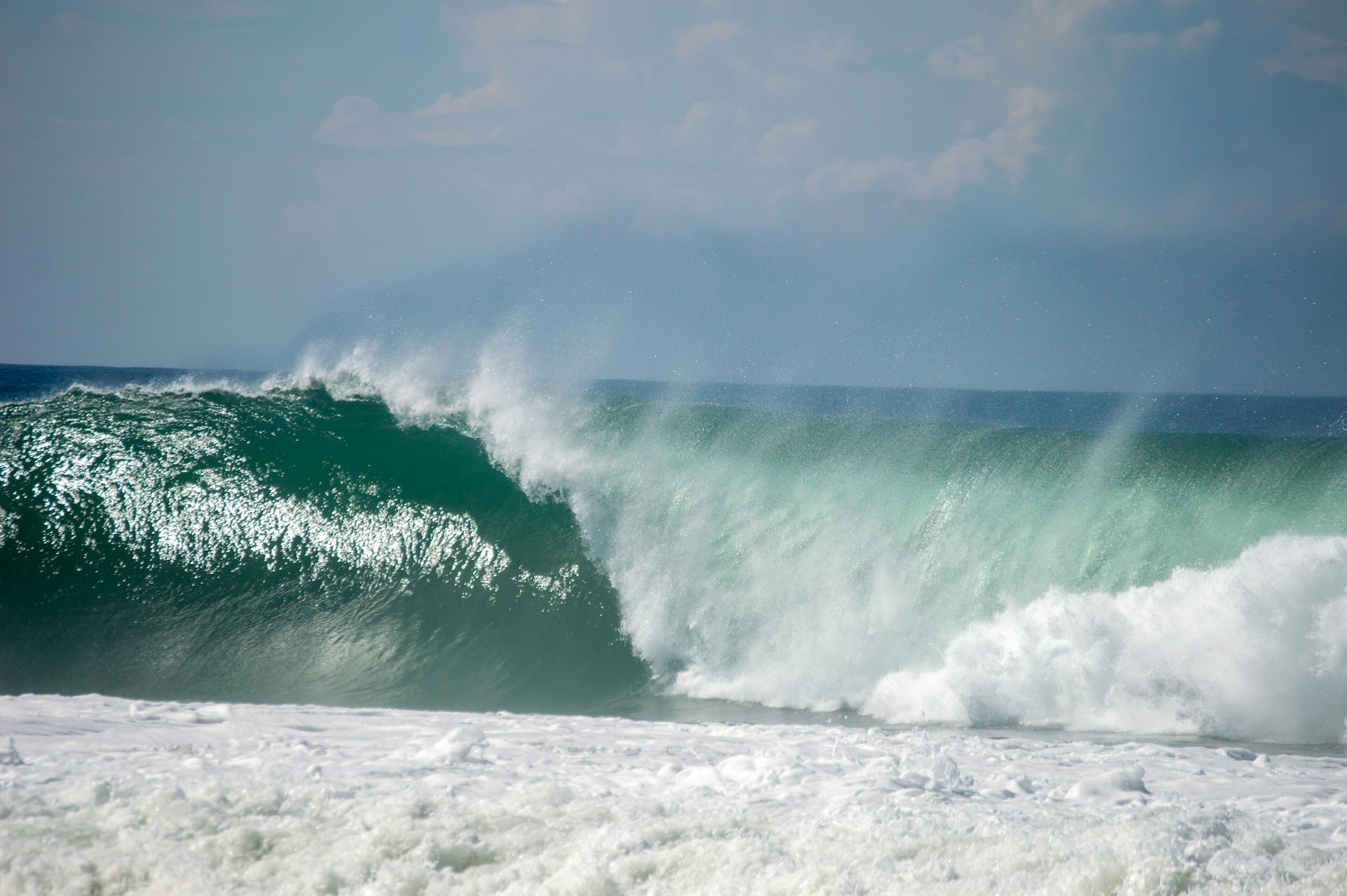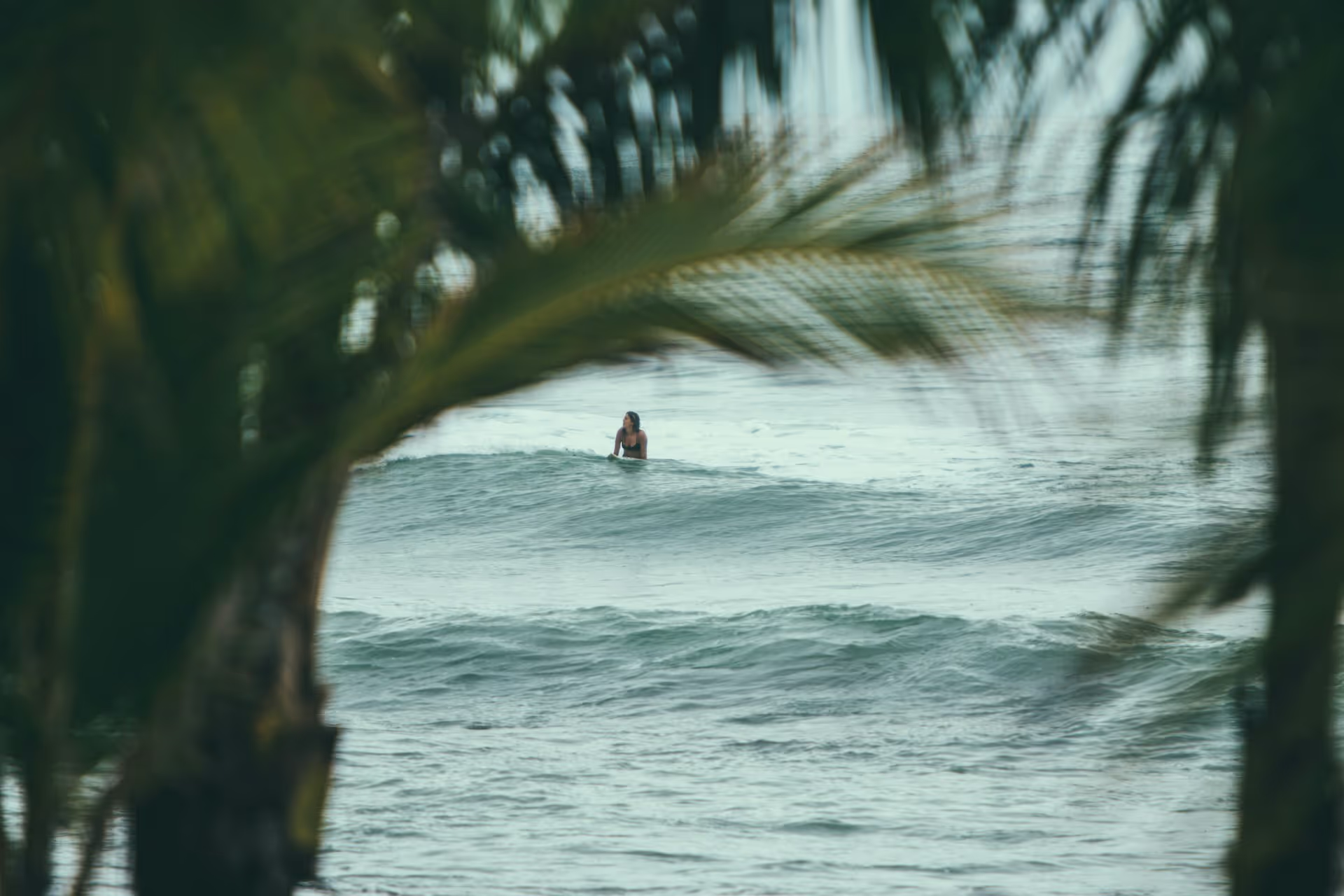What Is a Reef Break? Tips for Surfing Your First Reef Break

Surfing a reef break can be one of the most thrilling and intimidating experiences in the sport.
The waves are powerful, the lineup is often shallow and the reef beneath your board isn’t very forgiving.
But it’s also where some of the world’s best waves are found! At Kala Surf in Uluwatu, reef breaks are part of daily life... and we’ve seen how the right knowledge makes alllll the difference.
This guide covers what reef breaks are, how they work and (most importantly) the best tips for surfing them safely and confidently.
What is a reef break?
A reef break is a type of surf break that forms when waves roll in over a coral or rock reef.
Unlike beach breaks, which shift with the sand and tides, reef breaks tend to be more consistent. That’s because the reef doesn’t move... so the wave breaks in the same spot, with a similar shape, almost every time.
Reef breaks are known for their power and precision.
They often create long, hollow, barreling waves ideal for more advanced surfers. Famous reef breaks like Pipeline in Hawaii or Uluwatu in Bali attract skilled riders from all over the world.
But they also come with risks. Sharp coral, shallow water, strong currents and tight takeoff zones mean you need to bring a higher level of awareness and skill to the session.
Types of reef breaks
Not all reef breaks are the same. Some are deep and forgiving. Others are shallow and sharp. Here are the most common setups:
Point reef
Waves peel along a reef ledge that sticks out like a point. These waves can offer long rides and multiple sections. Great for cutbacks and flowing top-to-bottom maneuvers.
Slab reef
These are thick, powerful waves that pitch suddenly over very shallow reef. Scary! They’re short, fast and heavy… and decidedly not beginner-friendly.

Tips for surfing a reef break
1. Know the break before you go
Don’t just paddle out blind. Watch the lineup from shore. Study how the wave breaks. Look for where surfers are sitting and taking off. Identify the channel (if there is one) and understand how the current moves.
If possible, talk to a local surfer or get a session with a guide.
At Kala Surf, we walk our guests through the break on land before we even paddle out.
By doing this you can better understand the reef layout can prevent serious injuries.
2. Time your paddle out
Getting out through a reef break isn’t the same as a sandy beach.
Wait for a lull (break or pause) in sets before making your move. Paddle out through the channel if there’s one available... not through the impact zone.
Timing is everything.
3. Wear reef-safe surf gear
A good pair of reef booties can protect your feet when entering or exiting.
Some surfers wear neoprene tops or surf leggings for added abrasion resistance. Just make sure whatever you wear doesn’t restrict your paddling.
4. Never dive headfirst
If you wipe out, protect your head with your arms. Fall flat to avoid going deep. Never, ever, ever dive headfirst!
You’re surfing over rock or coral. Even a small mistake can cause cuts, bruises or worse.
5. Respect the lineup
Reef breaks can get crowded... and the takeoff zone is often small.
Don’t paddle straight to the peak. Watch how the lineup functions, respect the pecking order and take your time. Locals will notice if you’re courteous and give you waves as a result.
6. Improve your positioning
Because reef waves are more predictable, you need to learn how to sit in the right spot and read the sets.
Practice your positioning. Watch where others are taking off. Ask the locals whether there’s a marker spot on land that you can line up with. This way you can always paddle back to more or less the same spot.
As an aside, having the right surfboard under your feet can help with this.
7. Commit to the drop
Many reef waves are steep and fast. You can’t hesitate.
If you paddle for a wave, commit fully. Half-paddling or backing out can put you and others at risk.
8. Stay calm if you wipe out
You will fall eventually. Everyone does. If you do, relax.
Protect your head. Don’t thrash. The reef won’t move, so focus on minimizing contact. Let the wave pass then come up slowly, noting whether there are other surfers riding waves your way.
9. Exit carefully
Getting back in can be harder than paddling out. Plan your exit route.
Use the same channel or safe zone you spotted earlier. Avoid standing on coral unless you absolutely have to and shuffle your feet to avoid sea urchins.
10. Know your limits
Reef breaks can humble even experienced surfers.
Don’t paddle out into conditions you’re not ready for. There’s no shame in sitting a session out. Or even watching from the shoulder until you’re confident. Safety matters more than ego.
Ready to Surf in Bali? Secure Your Spot Now!
How to build confidence on reef breaks
Like any surf skill, confidence comes with time.
Our advice?
- Start small and learn how to hold your breath underwater
- Get comfortable in mellow reef waves before stepping up to heavier spots
- At Kala Surf, we start students on forgiving reef setups with easy takeoffs, gradually moving you toward more challenging breaks
- Video feedback, coaching and mindful repetition help break the fear cycle: you begin to trust your instincts and learn how to fall safely. You gain the strength and precision needed to surf with control... not panic
- Breathwork, mental prep and visualisation are also powerful tools
- Just like training for a big wave, you can train your brain to stay calm under pressure
FAQs
Q. Are reef breaks only for advanced surfers?
Not always. Some reef breaks are mellow and beginner-friendly, especially if the water is deep and the wave is soft-ish. But many require intermediate to advanced skill. Here are the most beginner-friendly breaks in Uluwatu.
Q. Can I surf a reef break without booties?
Yes, though booties are a smart choice for protection, especially when entering or exiting. Some experienced surfers prefer the feel of bare feet but hey… it’s totally up to you!
Q. What’s the difference between a reef and a beach break?
Reef breaks break over rock or coral and are usually more consistent. Beach breaks break over sand and shift more with tides and swells, making them harder to judge and catch waves at.
Q. Is it dangerous to fall on the reef?
It can be. That’s why falling flat, protecting your head and knowing how to wipe out safely are key.
Q. How do I know if I’m ready for a reef break?
If you can confidently angle takeoffs, handle steep drops, duck dive well and navigate currents, you might be ready. If in doubt, ask a coach.
Q. Do tides affect reef breaks?
Absolutely. Many reef breaks only work at certain tides. Low tide usually means shallower and riskier. High tide might make the wave fatter (softer) or less defined.
Q. Can I surf a reef break alone?
It’s not recommended, especially if it’s your first time. Always surf with others, ideally with someone who knows the break well (like our Kala Surf coaches!).
Final thoughts
Reef breaks offer some of the best waves on the planet, but they demand respect.
With the right preparation, gear and mindset, you can enjoy them safely and push your surfing further than ever before.
At Kala Surf, we help surfers navigate Bali’s famous reefs with confidence. From Uluwatu to Padang Padang, we know every takeoff zone, every channel and every key to unlocking each break. Ready to surf reef breaks with us?
Whether it’s your first reef or your fiftieth, the approach is the same.
Study the break. Respect the ocean. Commit to your wave. And above all… keep progressing.
More blogs you might like
FAQs
Find answers to your last-minute questions about your upcoming surf adventure with us.
Our packages include accommodation, daily surf lessons, and access to all camp facilities. We also provide surf gear for your convenience. Additional activities can be booked separately.
Travel insurance is highly recommended to cover any unexpected events. It can protect you against cancellations, medical emergencies, and lost belongings. Please check with your provider for specific coverage.
Booking is simple! Visit our Packages & Prices page to select your desired package. You can complete your reservation online or contact us for assistance.
Kala Surf Camp is located in the heart of Bali, close to the best surf spots. Our camp offers a peaceful environment while being just a short distance from vibrant local culture. You'll enjoy easy access to both surf and relaxation.
Yes, date changes can be made depending on availability. Please contact our support team as soon as possible to discuss your options. We aim to accommodate your needs whenever we can.






